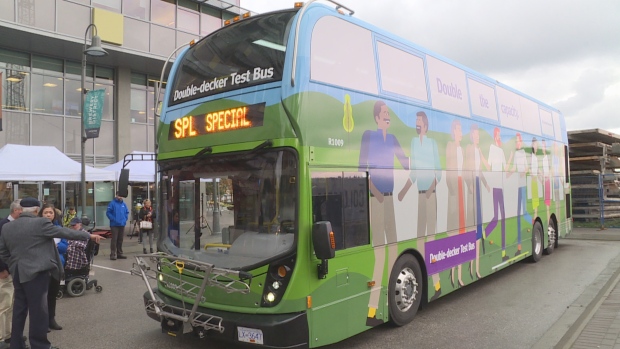The hate for TransLink is so pronounced in SFU’s student body that I feel like a broken record even trying to allude to it. But for just that reason, potential changes to our transit system are always important to talk about.
Vancouver recently announced its intention to test out two-decker buses, which currently run in nearby areas like Seattle and Victoria. Two Enviro 500 models will join TransLink’s other buses in October. This sounds like a blessing in theory; more seats means better travel, right? Depending on how it’s implemented, this could be great. But there are plenty of things we’ve got to consider before embracing the idea.
With the increased seat space, transit would also be an infinitely more relaxed endeavour. With everyone able to actually find a seat, things would be much less tense on the bus, and longer rides would be more likely to present an opportunity for students and workers to multitask and get some work done if they’re blessed with the appropriate portable technology.
However, there are some things that we’ve all got to think about before advocating too hard to turn this potential pilot project into a Vancouver mainstay. Is Vancouver in particular the right city for this?
Firstly, our articulated buses (the long ones with the connecting joint), according to Vancity Buzz, technically carry, on average, the same number of people as a double-decker bus would — though this might not be totally accurate now, as the Enviro 500s are said to fit 88 seated passengers or 121 total. However, assuming this is accurate, the only real difference would be a little less road space occupied, unless the double deckers were to replace only our smaller buses, but for a few reasons, that’s hardly feasible.
Another thing to consider is that Vancouver is full of low-hanging road signs on its highways, tunnels, and low-hanging elevated roads in general (just look at the area surrounding Stadium-Chinatown Station, for instance.) It’s also full of narrow roads. The city itself seems to be conscious of this; TransLink CEO Kevin Desmond mentioned last year that they would “want to put them on an express route . . . you don’t want to take people on and off in an urban setting.”
But if we get to the point where we want more of those buses, how many routes can really accommodate them properly? This is particularly glaring considering how famous Metro Vancouver already is for its crappy traffic. If an accident happens, I can’t see those buses having great maneuverability as far as minimizing damages is concerned.
Given the changed weight distribution, I’m also concerned about how well such buses would run in the winter months. Driving in winter conditions isn’t just down to the winter equipment I should hope those buses will get; it’s also dependent on the skill of the driver and the vehicle’s composition. That’s not to call TransLink’s drivers unskilled, but there will almost certainly be points in the transition process where the risk of a serious accident goes way up with the unfamiliar vehicles.
Money also plays a role here. With TransLink already upping fares and going ahead with various other ‘upgrades’ to its system, do we really want to risk having to pay even more fares for a system which, let’s face it, won’t affect enough routes to really matter to the majority of us?
As mentioned previously, TransLink will presumably also be paying extra costs for the hours needed to train up its employees for the new routes and new buses — which might not seem like it’ll be a ton if these buses end up servicing only a few routes, but presumably they’ll have to train at least more drivers than they have buses. It’ll still be a big chunk of change, and if that’s the case, I’d rather just spend that money on getting more frequent buses, if possible.
On that note, how would these buses affect the pre-existing schedule? I would hate to get these double-deckers if it led to fewer total buses running.
At the end of the day, double-decker buses might sound good, and they could be if done right. But there are plenty of road bumps to beat before you get too excited for a transit Renaissance.


[…] on TransLink definitely vary with students, with stances in just The Peak ranging from frustration with its goals to finding it underappreciated. But regardless of your judgement of how well it performs, its […]